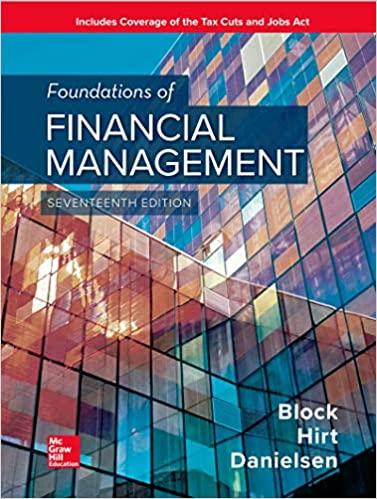Question
Sue is the beneficiary of a life insurance policy with a death benefit of $300,000. She elects to allow the insurance company to retain the
-
Sue is the beneficiary of a life insurance policy with a death benefit of $300,000. She elects to allow the insurance company to retain the principle amount of the death benefit and collect periodic interest payments from the insurance company. Which death benefit settlement option did she elect?
Fixed-Period Option
Interest-Only Option
Cash Payment
Life Income Option
QUESTION 4
-
What are some of the costs associated with the premature death of an individual?
The individuals lost income
Funeral expenses
Costs related to grief and mourning
All of the above
QUESTION 5
-
Ordinary whole life insurance does not accumulate a cash value but is often much less expensive than term insurance.
True
False
QUESTION 6
-
Minimum retirement age for U.S. social security is 65.
True
False
QUESTION 7
-
A defined benefit plan places the risk of insufficient retirement savings on the employee.
True
False
QUESTION 8
-
The minimum withdrawal age (without penalties) for an IRA or 401(k) is between 59 and 60.
True
False
QUESTION 9
-
Which social insurance benefits are at least partially funded through an employer-based payroll tax?
Social Security Retirement
Social Security Disability
Unemployment Insurance
All of the Above
QUESTION 10
-
Jim is a legal clerk for the JBW Law Firm. He is provided with a defined benefit retirement plan. The plan has a contribution percentage of 2.4%. The retirement benefit is based on the average salary from the employees last three years. Jim retires after 35 years at the law firm with salaries in his last three years of $44,000, $47,000, and $51,000. How much will his annual benefit be once he retires?
Between $32,000 and $34,000
Between $35,000 and $37,000
Between $39,000 and $41,000
Not enough information to calculate the benefit
QUESTION 11
-
The risk of premature death, the risk of poor health (disability), and the risk of unemployment are ALL associated with lost working income.
True
False
QUESTION 12
-
Longevity risk can refer to either (i) dying while we have unpaid financial obligations or (ii) living beyond the savings we built for retirement.
True
False
QUESTION 13
-
Tangible personal property can be described as:
Land, buildings, and other structures which are permanently attached
Ideas or business property with no physical form
Movable business property with a physical form
Property losses that are unforeseen and occur as a result of chance
QUESTION 14
-
An example of "risk arising from others" is a fire in my building caused by a faulty electrical outlet which causes my store to close for 3 months.
True
False
QUESTION 15
-
Which category do special damages fall into in a lawsuit for negligence?
General damages
Plaintiff damages
Compensatory damages
Punitive damages
QUESTION 16
-
Punitive damages punish a defendant for intentional damage to property or reputation.
True
False
QUESTION 17
-
In a negligence lawsuit, the defendant may sue the plaintiff for compensatory or punitive damages.
True
False
QUESTION 18
-
Which of the following is NOT an element of negligence?
A duty to not cause harm
Damage to property or injury to person(s)
Breach of a duty not to cause harm
Purposefully ignoring a duty not to cause harm
Step by Step Solution
There are 3 Steps involved in it
Step: 1

Get Instant Access to Expert-Tailored Solutions
See step-by-step solutions with expert insights and AI powered tools for academic success
Step: 2

Step: 3

Ace Your Homework with AI
Get the answers you need in no time with our AI-driven, step-by-step assistance
Get Started


